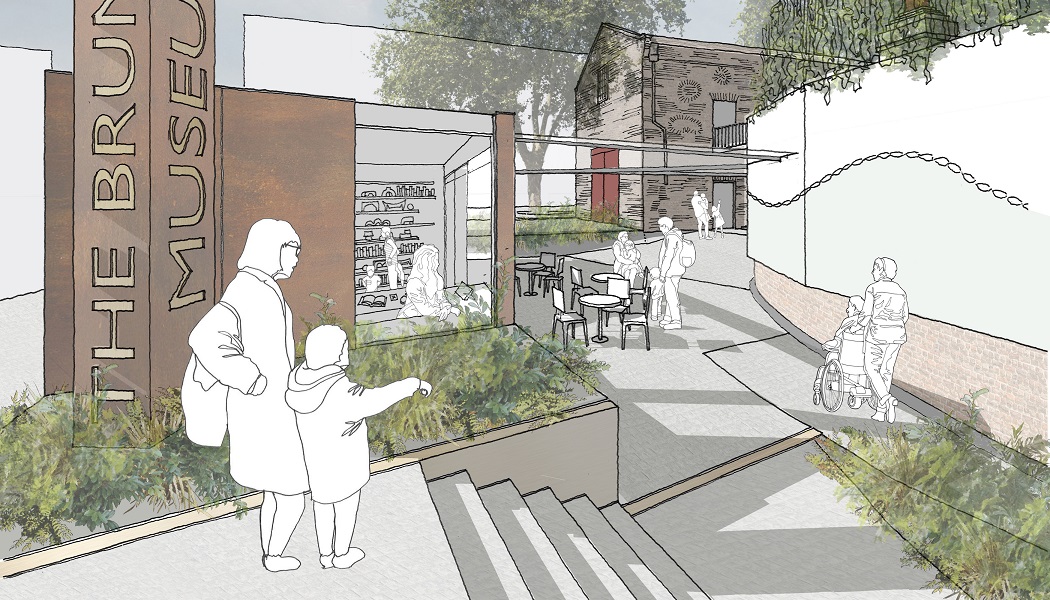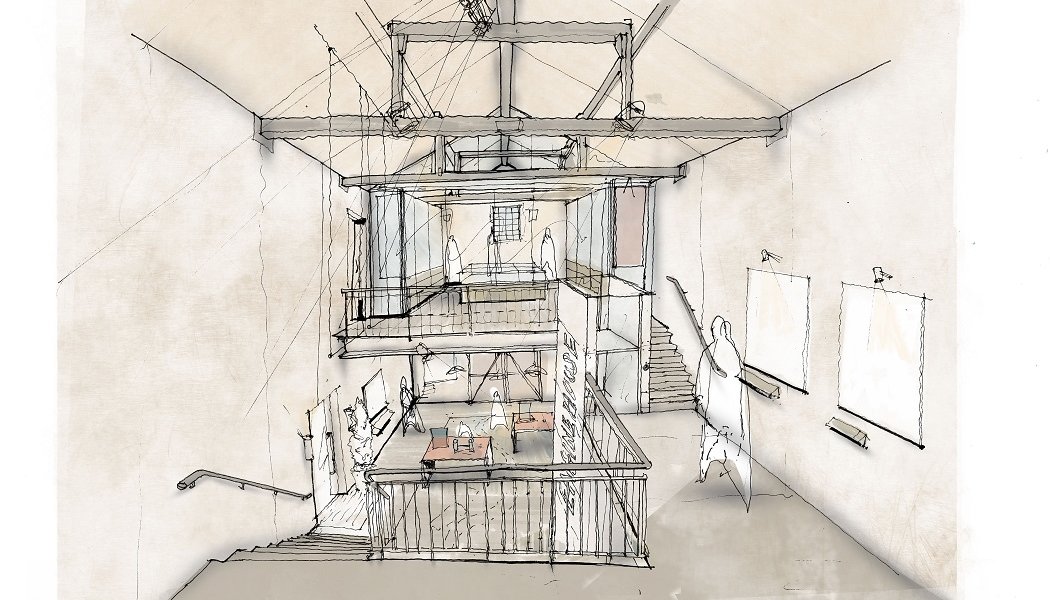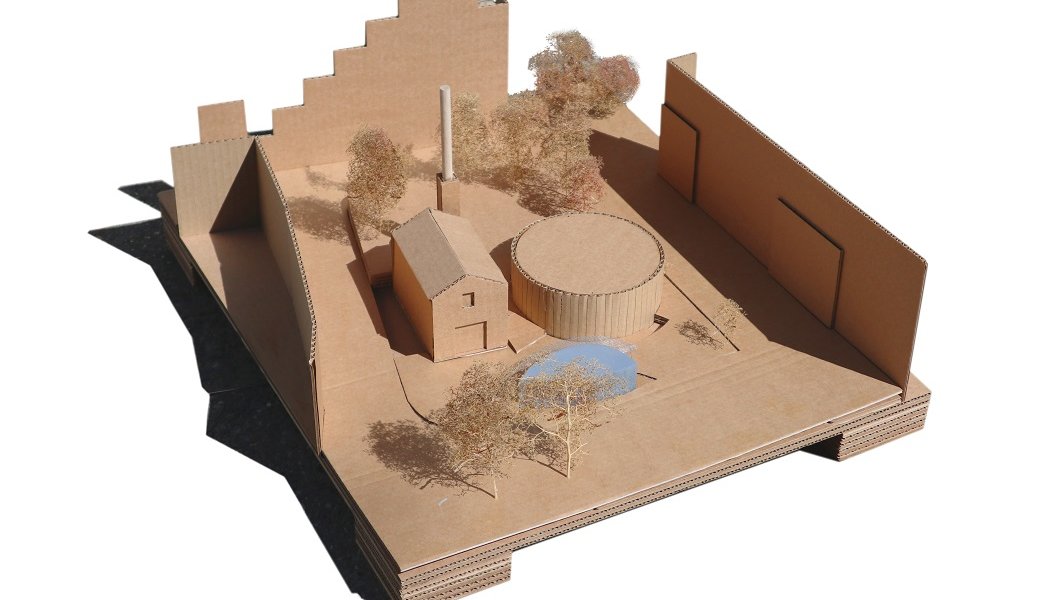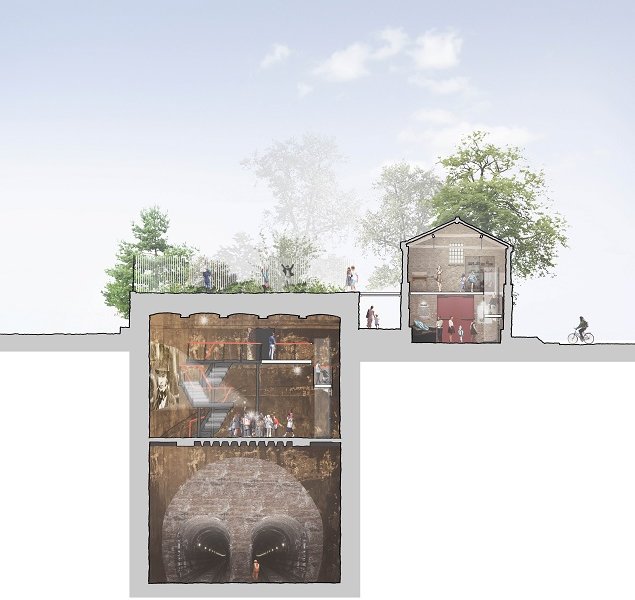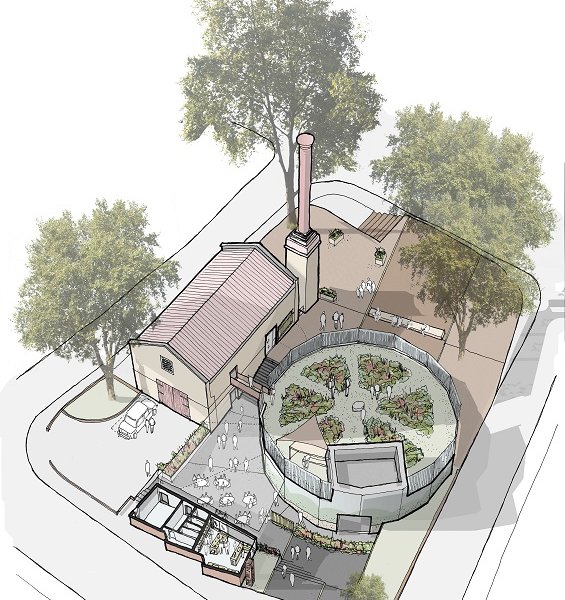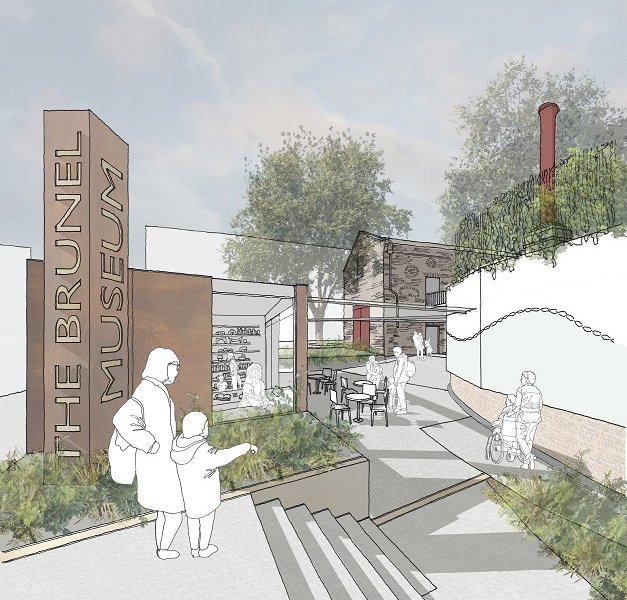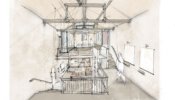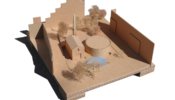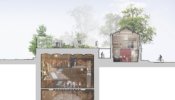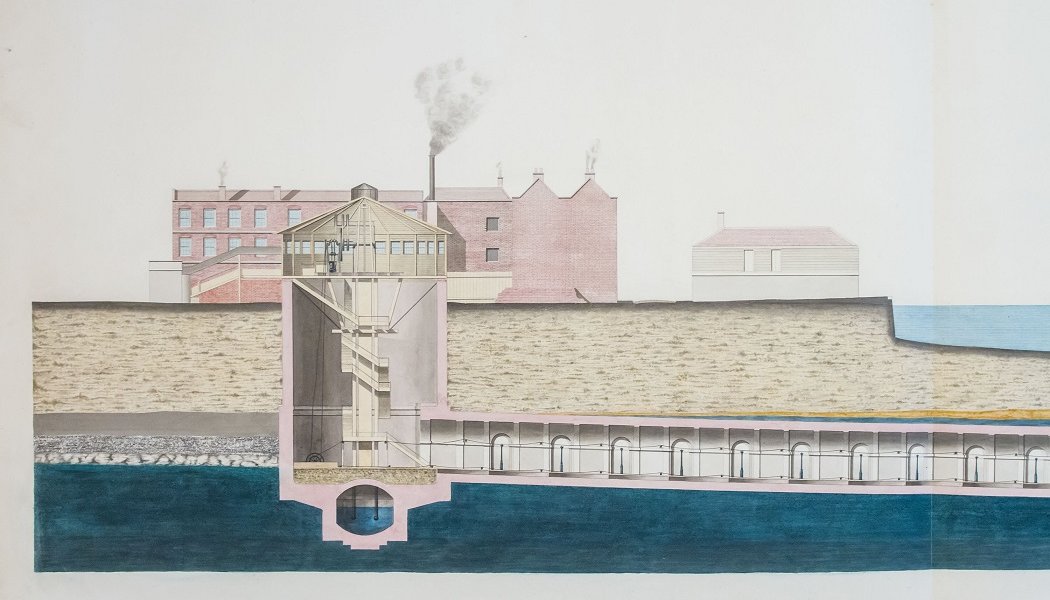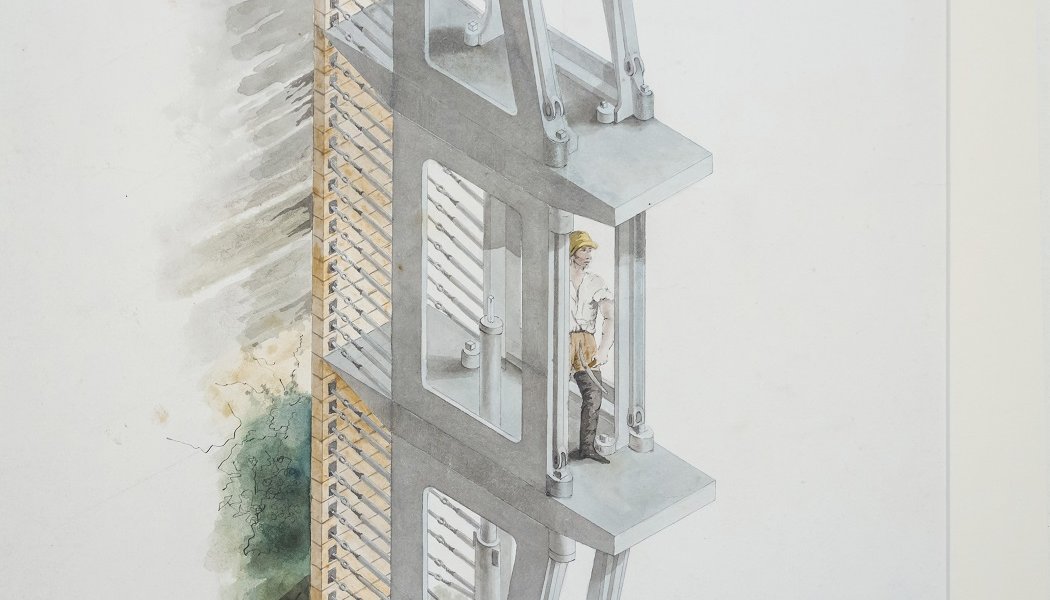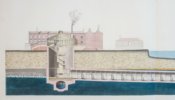The scheme will bring about a large-scale reimagination of the spaces within the venue which sits at the Rotherhithe end of the Brunel’s Thames Tunnel.
The Brunel Museum Reinvented will see the creation of a new entrance pavilion, containing a café and shop which connect to a covered courtyard. This new entry has been designed to provide a clearer access point to the Museum, with external routes linking to the popular Engine House and Sinking Shaft.
The lion’s share of visitor functions will be housed in the pavilion, freeing up the Engine House for a full refurbishment and redesign as a space for interpretation, exhibitions, research and archiving.
As a matter of priority, the design team is collaborating with Access=Design to improve inclusive access to the site. The project will ensure inclusive access to all six levels of the museum, through the introduction of ramps, level thresholds, two platform lifts and a link bridge.
The renovation will also enable original watercolour designs of the Thames Tunnel, created by Marc Brunel’s team and recently acquired by the museum, to be put on display for the very first time. These will be housed under climate-controlled conditions within an exhibition space.
Jerry Tate, partner at Tate Harmer, who worked with the museum to convert the Grade II* listed Sinking Shaft into a performance space back in 2016, describes the venue as an “unusual mix of powerful industrial heritage surrounded by an unexpectedly verdant and compelling landscape on the end of the Thames”.
The new scheme, he adds, will “build on this as a character for development, using this rich palette to create a unique and coherent visitor experience”.
The team assembled to complete the work “combines an outstanding knowledge of the site and unparalleled heritage expertise for a site that remains deeply symbolic of past, as well as future, engineering endeavour,” according to Dana Skelley OBE, chair of trustees at the Brunel Museum.

